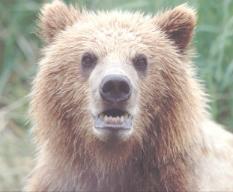
Click on the above image to enlarge.
Of particular interest were the facts that bears weigh more in urban areas, and that their density per square mile is greater. For instance the density of bears in the wild is 3 per 38 square miles, but in urban areas their density was documented as 120 bears per 38 square miles. Also noted is a decrease in denning period from 100-150 days per year to 50-100 days per year in urban areas, which means that bears are out and about searching for food more of the year. Finally, the age that females first reproduce is reduced, and the numbers of cubs per birthing cycle is increased in urban areas. This increase in reproductive rate is a natural outcome of an abundant food supply – most wildlife will increase their reproductive rate when food supplies are good and reduce their reproductive rate during harder times.
This data points out a positive feedback loop that certainly we humans don’t want to promote. The fact that bears can access an abundant and easy food supply in and around residences not only contributes to challenging bear behaviors, but also increases their reproductive rate and densities. All of this is another indicator of the need to educate citizens, businesses, schools and governmental organizations to make bear attractants inaccessible.
Unfortunately, however, it only takes a few people to contribute significantly to the food conditioning of bears, and not infrequently those that contribute most to the problem are least inclined to change their behavior. Even in parts of Canada where Conservation Officers can fine people who leave non-natural foods accessible to wildlife, large numbers of bears are euthanized each year. So there is no easy answer, but certainly continued education about this issue is warranted.
Nan Laney
Skagit, Whatcom and Northern Snohomish Coordinator
Grizzly Bear Outreach Project (GBOP)
